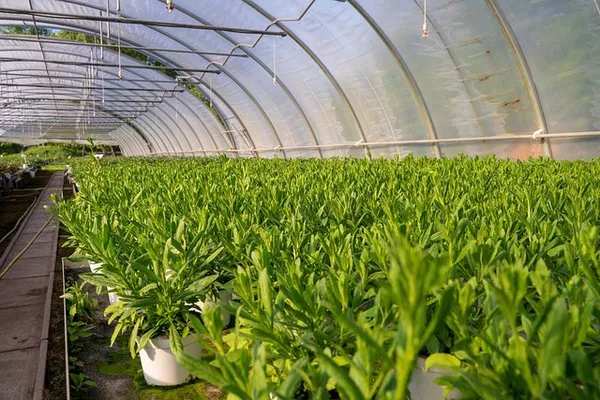Proper watering is an essential aspect of plant care that significantly impacts their growth, health, and overall well-being. As an integral part of gardening, understanding the correct watering techniques ensures that plants receive the necessary hydration while preventing overwatering, which can lead to root rot and other issues. This article aims to provide a comprehensive guide to watering techniques, helping gardeners of all levels maintain thriving and beautiful plants.
The Importance of Watering
Water is a vital resource for plants, enabling them to perform essential functions such as photosynthesis, nutrient uptake, and cellular processes. Adequate watering not only sustains the plant’s life but also contributes to its resilience against environmental stressors and diseases. Water helps regulate temperature and maintains turgor pressure in plant cells, providing structure and support.
Understanding Plant Water Needs
Different plant species have varying water requirements based on factors like their natural habitat, size, growth stage, and weather conditions. Understanding these individual needs is crucial for effective watering. Some plants, such as succulents and cacti, prefer dry conditions and can tolerate drought, while others, like ferns and tropical plants, require consistently moist soil.
To determine a plant’s water needs, observe its leaves and soil moisture. Wilting leaves often indicate dehydration, while yellowing leaves can signal overwatering. Using a moisture meter or inserting your finger into the soil can help determine if it’s time to water.
Watering Techniques
a. Watering Frequency:
The frequency of watering largely depends on the plant type and environmental conditions. Generally, it is better to water deeply but less often, encouraging the growth of deeper, stronger roots. Frequent shallow watering can lead to weaker root systems, making plants more susceptible to drought stress.
b. Watering Time:
The ideal time to water plants is early morning or late afternoon when temperatures are lower. Avoid watering during the hottest part of the day to minimize water loss due to evaporation.
c. Watering Methods:
1. Hand Watering: Hand watering using a watering can or hose with a gentle flow is suitable for small gardens or potted plants. This method provides greater control over water distribution and prevents excessive water accumulation.
2. Drip Irrigation: Drip irrigation systems deliver water directly to the plant’s root zone, minimizing water wastage and reducing the risk of fungal diseases. These systems can be automated, making them efficient for large gardens.
3. Soaker Hoses: Soaker hoses are porous hoses that allow water to seep slowly into the soil along the plant’s base. They promote deep root growth and are ideal for garden beds and shrubs.
4. Sprinklers: Overhead sprinklers are practical for watering large lawns and gardens. However, they can lead to water wastage due to evaporation and runoff, so use them sparingly and avoid watering during windy conditions.
Water Conservation Tips
Conserving water is not only environmentally responsible but also economically beneficial. Implementing the following water-saving techniques can help gardeners reduce water consumption while maintaining healthy plants:
a. Mulching: Apply a layer of organic mulch, such as wood chips or straw, around plants to retain moisture, suppress weed growth, and moderate soil temperature.
b. Rainwater Harvesting: Install rain barrels or tanks to collect rainwater from gutters. This natural water source can be used for watering plants, reducing reliance on treated water.
c. Grouping Plants: Grouping plants with similar water requirements together in the garden helps create efficient watering zones, allowing you to target water usage where it is most needed.
d. Xeriscaping: Consider xeriscaping, a landscaping technique that uses drought-resistant plants and efficient irrigation methods to conserve water.
Signs of Overwatering and Underwatering
Recognizing signs of overwatering and underwatering is essential in adjusting your watering practices promptly.
a. Overwatering: Signs of overwatering include wilting leaves, yellowing, and a foul smell in the soil. Additionally, a waterlogged soil surface might be present, leading to the growth of mold and algae.
b. Underwatering: Underwatered plants may have dry, brittle leaves that are prone to wilting. The soil will be visibly dry, and the plant may exhibit slow or stunted growth.
Seasonal Watering Adjustments
Adapting your watering routine based on the changing seasons is crucial to support plant growth and conserve water. Consider the following seasonal adjustments:
a. Spring: As temperatures rise and plants enter their growth phase, increase watering frequency while ensuring proper drainage to prevent waterlogged soil.
b. Summer: In hot weather, water more frequently, paying attention to plants in direct sunlight or exposed to wind, which can cause faster water evaporation.
c. Fall: Reduce watering as temperatures cool down, and plants transition into dormancy. However, continue to monitor their water needs, especially during dry periods.
d. Winter: Most plants require less water during winter due to slower growth. Be cautious not to overwater, as dormant plants are more susceptible to root rot.
Watering Indoor Plants
Proper watering practices are equally vital for indoor plants. When watering indoor plants, consider the following tips:
a. Use well-draining pots: Ensure that the pots have drainage holes to prevent water from accumulating at the bottom, leading to root rot.
b. Water sparingly: Indoor plants typically require less water than outdoor ones due to the controlled environment. Only water when the top inch of the soil feels dry.
c. Monitor humidity: Indoor plants often benefit from increased humidity levels, so consider using a humidifier or placing a tray of water near the plants.
Conclusion
Mastering the art of watering plants is a fundamental skill that can significantly impact the success of your gardening endeavors. By understanding your plants’ individual needs, employing efficient watering techniques, and conserving water whenever possible, you can nurture healthy and vibrant greenery throughout the year. Remember to observe your plants closely and make adjustments as necessary, ensuring that they receive the care and attention they need to thrive. With the knowledge gained from this comprehensive guide, you are well-equipped to create a flourishing garden and a nurturing environment for your plants.


